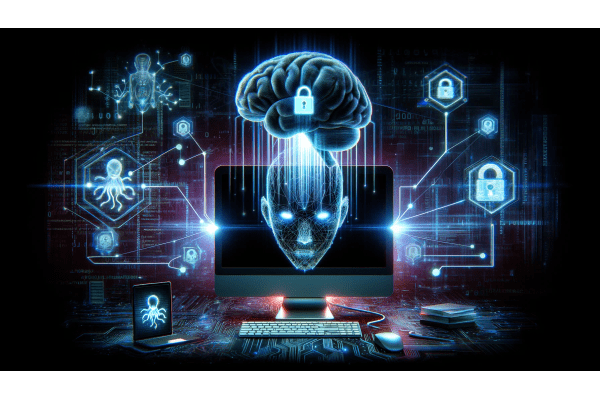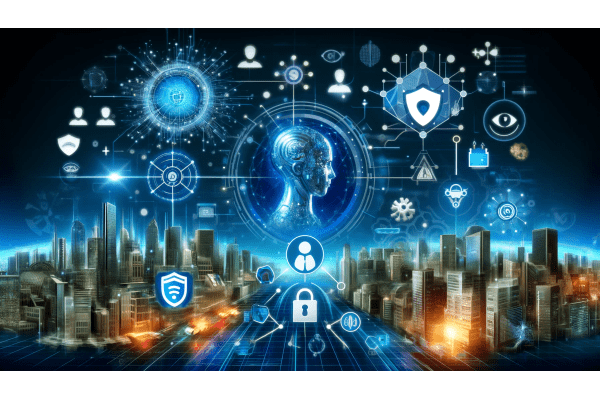Introduction
In today’s data-driven world, the convergence of artificial intelligence and cybersecurity has become a focal point of discussion. As we witness the exponential growth of AI technologies, the potential risks posed by malicious actors leveraging AI for cyber attacks are becoming increasingly concerning. This article aims to delve into the intricate relationship between artificial intelligence and cybersecurity, highlighting the vulnerabilities introduced by AI in the hands of hackers and proposing innovative strategies to enhance cyber defense using AI-powered solutions.
The Rise of AI in Cyber Attacks
With the proliferation of advanced AI models and their transformative capabilities, hackers have found a potent ally in AI to orchestrate sophisticated cyber attacks. AI’s proficiency in writing malware and exploiting vulnerabilities in code presents a formidable challenge for cybersecurity professionals. The ability of AI to generate polymorphic self-encrypting viruses, as demonstrated by a simple AI model, underscores the potential for AI to create undetectable threats that can evade traditional security measures.
Neglected Cybersecurity in Companies
Despite the escalating frequency and severity of cyber attacks, many companies, including industry giants like Toyota, continue to neglect robust cybersecurity practices. The revelation of decade-long data breaches affecting millions of user accounts serves as a stark reminder of the repercussions of inadequate cybersecurity measures. As cyber threats evolve in complexity and aggressiveness, the complacency of organizations in fortifying their cyber defenses poses a significant risk to data security and privacy.
Examples:
- Equifax Data Breach (2017): One of the most significant data breaches, where hackers exploited a vulnerability in a web application to access the personal data of 147 million people.
- Yahoo Data Breaches (2013-2014): Yahoo experienced multiple data breaches affecting over 3 billion accounts, with delayed responses and insufficient security measures contributing to the scale of the breaches.
- Toyota’s Supplier Data Breach (2022): Toyota reported a data breach involving a supplier’s system, exposing sensitive information of about 300,000 customers due to weak cybersecurity protocols.
Social Engineering and AI Manipulation
One of the most insidious threats posed by AI in cyber attacks is its role in facilitating social engineering tactics. By leveraging AI-generated scripts to manipulate individuals through personalized and convincing messages, hackers exploit human vulnerabilities to gain unauthorized access to sensitive information. The increasing prevalence of social engineering attacks, responsible for a significant portion of major data breaches, underscores the critical need to address the human element in cybersecurity threats.
Examples:
- Spear Phishing Attacks: Hackers use AI to craft highly personalized emails that appear to be from trusted sources, tricking employees into revealing confidential information or installing malware.
- Business Email Compromise (BEC): AI helps attackers mimic the communication style of executives to deceive employees into transferring funds or sharing sensitive data.
- Deepfake Technology: AI-generated videos or audio clips impersonating trusted individuals to manipulate targets into taking harmful actions.
Strategies for Enhanced Cyber Defense
To combat the evolving landscape of cyber threats fueled by AI innovation, organizations and individuals can leverage AI-powered solutions to bolster their cybersecurity posture and mitigate risks effectively.
AI-Driven Security Measures
Harnessing the power of AI, organizations can deploy advanced threat detection systems that leverage machine learning algorithms to identify and respond to anomalous activities in real-time. AI-based security solutions offer proactive defense mechanisms that adapt to emerging threats and enhance incident response capabilities.
Products:
- Darktrace: Uses machine learning to detect and respond to cyber threats in real-time.
- CrowdStrike Falcon: Provides endpoint protection with AI-driven threat detection and response.
- CylancePROTECT: Uses AI and machine learning to prevent malware execution and provide endpoint security.
Generative AI for Detection and Prevention
Generative AI models can be employed to detect social engineering attacks by analyzing and identifying patterns in AI-generated scripts used in phishing campaigns. By leveraging generative AI for early detection and prevention of social engineering tactics, organizations can fortify their defenses against deceptive cyber attacks.
Products:
- PhishMe (now Cofense): Uses AI to detect phishing attempts and train employees to recognize phishing attacks.
- Barracuda Sentinel: Provides AI-based protection against spear phishing and other targeted attacks.
- Area 1 Security: Employs AI to preemptively identify and stop phishing attacks.
Automated Code Generation
For developers and cybersecurity professionals, generative AI can streamline the process of writing secure code by automating the creation of boilerplate code and templates. By offloading routine coding tasks to AI models, professionals can focus on higher-level security considerations, such as system scalability and efficiency, to enhance overall cybersecurity resilience.
Products:
- GitHub Copilot: Uses AI to assist developers in writing code more efficiently and securely.
- Tabnine: AI-powered code completion tool that helps developers write secure code faster.
- DeepCode (acquired by Snyk): AI-driven code analysis tool that helps detect and fix security vulnerabilities in real-time.
As we navigate the intricate interplay between artificial intelligence and cybersecurity, it is imperative to recognize the pivotal role of robust cyber defense strategies in safeguarding sensitive data and privacy. By embracing AI-powered solutions and proactive security measures, organizations and individuals can fortify their defenses against evolving cyber threats and uphold the integrity of digital ecosystems.
Conclusion
In the era of rapid technological advancement and pervasive digital connectivity, the synergy between artificial intelligence and cybersecurity presents both unprecedented opportunities and challenges. By fostering a culture of cyber resilience and leveraging AI-driven innovations, we can navigate the complex cybersecurity landscape with vigilance and adaptability. As we strive to harness the transformative potential of AI while safeguarding against malicious exploitation, the collective commitment to cybersecurity emerges as a cornerstone of a secure and thriving digital future.




